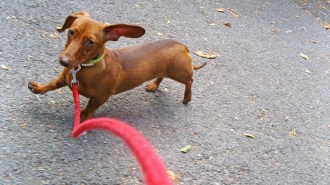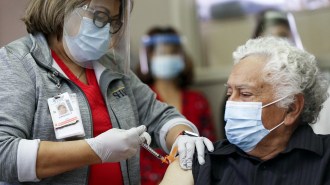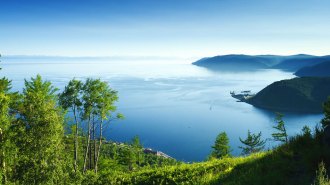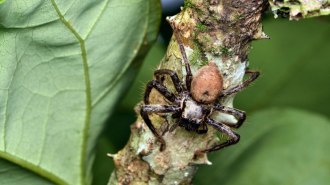Uncategorized
-

For 100 years, bringing you the latest in science
Editor in chief Nancy Shute reflects on a century of science news as the 100th anniversary of Science News arrives.
By Nancy Shute -

-
 Health & Medicine
Health & MedicineA new polio vaccine joins the fight to vanquish the paralyzing disease
Work on the ground to vaccinate children continues in the push to finally eradicate polio.
-
 Science & Society
Science & Society‘The Light Ages’ illuminates the science of the so-called Dark Ages
In telling the story of a monk who contributed to astronomy, a new book shows that science didn’t take a break during the Middle Ages.
-
 Chemistry
ChemistryThis weird chemical bond acts like a mash-up of hydrogen and covalent bonds
Chemistry students are taught that hydrogen bonds and covalent bonds are distinct, but a new study shows they exist on a continuum.
-
 Genetics
GeneticsSome identical twins don’t have identical DNA
Mutations arising early in development may account for genetic differences between identical twins.
-
 Anthropology
AnthropologyIce Age hunters’ leftovers may have fueled dog domestication
Ancient people tamed wolves by feeding them surplus game, researchers suggest.
By Bruce Bower -
 Health & Medicine
Health & MedicineSevere allergic reactions to COVID-19 vaccines are extremely rare, CDC says
Out of the first 1.9 million doses of Pfizer’s COVID-19 vaccine given in the United States, there were 21 reported cases of anaphylaxis, a CDC study finds.
-
 Genetics
GeneticsPlague may have caused die-offs of ancient Siberians
DNA suggests that the deadly bacterium that causes the plague reached northeast Asia by 4,400 years ago.
By Bruce Bower -
 Science & Society
Science & SocietyHow schools can reduce excessive discipline of Black students
Black middle and high school students miss four times as much school as white children due to suspensions. What can be done to shrink the gap?
By Sujata Gupta -
 Chemistry
ChemistryZinc-air batteries are typically single-use. A new design could change that
Swapping out the electrolyte in zinc-air batteries helps these next-gen power sources last longer.
-
 Animals
AnimalsThese spiders may sew leaves into fake shelters to lure frogs to their doom
Madagascar’s huntsman spiders use silk to turn two leaves into a cool hollow. Such microhabitats may appeal to the spiders’ prey, a study suggests.
By Jake Buehler